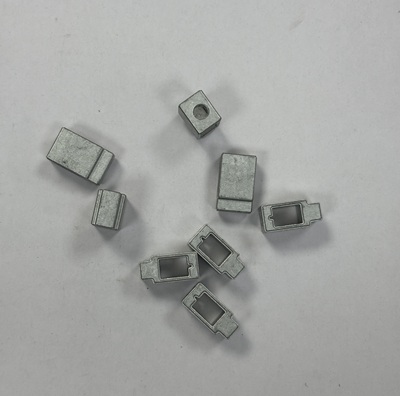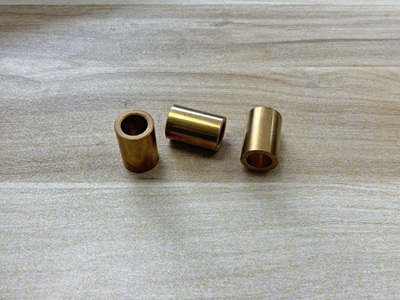Powder Metallurgy is an advanced manufacturing approach that overcomes the waste, complexity, and feature-integration challenges often faced in traditional machining. At Ningbo Joyo Metal Products Co., Ltd., we recognize the growing need for processes that deliver near-net shape, minimize scrap, and unlock new material possibilities. Powder Metallurgy answers these needs, enabling engineers and buyers to design and source components that machining alone cannot achieve. With this method, industries ranging from automotive to consumer goods can create stronger, lighter, and more efficient parts that stand out in performance and cost-effectiveness.
Where conventional machining hits limits
Machining has long been the backbone of precision manufacturing, but its subtractive nature creates several boundaries:
Geometry complexity: Intricate internal channels, undercuts, or thin-walled structures are often impossible or prohibitively costly to produce by machining. Removing material from solid blocks cannot replicate these geometries without expensive multi-axis setups or secondary operations. Even when possible, cycle times are long and reject rates increase significantly.
Scrap and waste: Machining removes significant volumes of material. For large production runs, this translates to high raw material costs and recycling efforts. Precious alloys make this issue even more critical, as wasted titanium or nickel alloys are difficult to recover economically.
Thin walls and fragile features: As components get lighter, machining delicate designs becomes risky. Vibrations, tool deflection, and breakage often compromise tolerances. Additional fixturing or slower speeds are required, which raises production cost.
Hard-to-machine alloys: Titanium, high-temperature superalloys, and wear-resistant steels present difficulties for cutting tools. Tool wear drives up both costs and downtime, while also requiring specialized equipment that not every supplier can maintain.
These challenges highlight why design engineers and procurement managers are increasingly considering alternatives like Powder Metallurgy, where material efficiency and shape freedom are built into the process.
Core PM processes that expand capability
The strength of Powder Metallurgy lies in its family of processes, each designed to extend manufacturing freedom.
Press and sinter
The classic press-and-sinter route starts with blending metal powders, compacting them into shape under high pressure, and then sintering them in a furnace. This produces strong, near-net components with excellent dimensional control. It is highly efficient for medium-to-high volume runs, as parts come out close to their final geometry, requiring little or no machining. Industries value this process because it combines repeatability with a cost structure that scales well.
Metal Injection Molding (MIM)
For small, intricate parts that would otherwise demand expensive multi-axis machining, MIM provides an excellent solution. Powder mixed with a binder is injection molded into complex shapes, then debound and sintered. This enables the production of parts with undercuts, threads, or gear profiles at scale. MIM is especially useful in automotive, medical, and electronics industries where small but high-precision components are needed. It allows thousands of pieces to be produced per run, ensuring consistency across every unit.
Hot Isostatic Pressing (HIP) and hot pressing
Porosity, a natural outcome of powder consolidation, can be minimized through HIP or hot pressing. In HIP, parts are subjected to high gas pressure and temperature, densifying the structure to nearly 100%. This improves fatigue strength, toughness, and corrosion resistance. For critical applications—such as aerospace or high-stress automotive parts—HIP ensures Powder Metallurgy components can match or exceed wrought materials. Hot pressing is another option, applying uniaxial pressure and heat to enhance density for medium-size components.
By selecting the right process, companies like Ningbo Joyo Metal Products can supply parts that surpass the capabilities of conventional machining while meeting international standards.
Design strategies: DfPM (Design for Powder Metallurgy)
Design for Powder Metallurgy requires a different mindset than machining. Rather than subtracting from a solid billet, engineers can design with additive freedom in mind.
Feature integration: Elements like bushings, gears, or porous bearings can be consolidated into single PM components. This eliminates assemblies and reduces failure points. For procurement teams, fewer assemblies also mean shorter supply chains.
Tolerance rules: While PM achieves excellent repeatability, designers must allow for shrinkage during sintering. Standard tolerance ranges are well established and can be adjusted with selective machining if needed. Designers can combine “as-sintered” dimensions with critical post-machined dimensions for best results.
Porosity as a function: Unlike machining, where porosity is a flaw, in PM it can be engineered. Self-lubricating bearings use controlled porosity to retain oils, reducing the need for external lubrication. In fluid control systems, engineered porosity can be used for metering or filtration.
These strategies give engineers a powerful set of design levers that machining cannot offer, opening the door to new product innovations.

Quality control and post-processing
Consistent quality is central to the acceptance of Powder Metallurgy in demanding industries. Multiple controls ensure performance:
Sintering profiles: Careful furnace control governs densification and microstructure. By adjusting temperature and atmosphere, mechanical properties can be fine-tuned for strength, ductility, or wear resistance.
Densification methods: Beyond standard sintering, HIP and secondary pressing steps eliminate residual porosity for applications needing maximum strength. This is particularly critical in parts exposed to cyclic stresses.
Selective machining: While PM reduces the need for machining, selective finishing can achieve tight tolerances on specific surfaces such as bearing seats or sealing edges.
Surface finishing and impregnation: Coatings, plating, or resin impregnation enhance surface durability or seal pores where required. These processes make PM parts suitable even in corrosive or high-wear environments.
By integrating these quality steps, Ningbo Joyo Metal Products ensures PM parts achieve the reliability demanded by international customers in Europe, North America, and beyond.
Typical use-cases where PM outperforms machining
The real proof of Powder Metallurgy lies in its applications. Several component types consistently favor PM over machining:
Powertrain gears: Automotive gears require high precision and strength. PM allows near-net gear teeth, reducing machining while offering cost-effective mass production.
Bearing components: Self-lubricating bushings and bearings, with designed porosity, extend service life and minimize maintenance. They are widely used in motors, pumps, and household appliances.
High-volume small parts: Fasteners, levers, or electrical connectors benefit from MIM, which delivers thousands of parts with consistent precision. Machining each of these individually would be uneconomical.
Porous filters: PM can create metal filters with tailored porosity for fluid and gas applications—impossible with subtractive machining. These filters serve industries like chemical processing and medical equipment.
Component consolidation: Multi-piece assemblies can be redesigned into single PM parts, reducing weight, cost, and assembly effort. This trend is particularly valuable in automotive and aerospace, where reducing part count improves reliability.
These examples illustrate how Powder Metallurgy is not only an alternative but a superior solution for certain volumes and geometries.

Comparison: Powder Metallurgy vs CNC machining
Factor | Powder Metallurgy | CNC Machining |
Material use | Near-net, minimal scrap | High scrap from removal |
Complex geometries | Internal channels, undercuts possible | Limited by tool access |
Cost drivers | Tooling investment, then low cost per part | Labor time, tool wear, material waste |
Porosity | Can be functional or eliminated with HIP | Generally dense, no porosity |
Best fit | Medium-to-high volume, complex or consolidated parts | Low volume, simple or high-precision surfaces |
This comparison shows why engineers often turn to Powder Metallurgy when conventional machining falls short.
Conclusion
Powder Metallurgy gives design engineers and procurement teams the ability to produce near-net parts with minimal waste, unlock geometries that machining cannot achieve, and integrate features directly into a single component. At Ningbo Joyo Metal Products Co., Ltd., our expertise in Powder Metallurgy processes—from press and sinter to MIM and HIP—ensures we can deliver solutions tailored to industries ranging from automotive to industrial equipment. For companies seeking better efficiency, cost savings, and innovative product design, Powder Metallurgy is a proven path forward. To discuss your project or request prototyping support, contact us today.
English
العربية
Français
Русский
Español
Português
Deutsch
italiano
日本語
한국어
Nederlands
Tiếng Việt
ไทย
Polski
Türkçe
አማርኛ
ພາສາລາວ
ភាសាខ្មែរ
Bahasa Melayu
ဗမာစာ
தமிழ்
Filipino
Bahasa Indonesia
magyar
Română
Čeština
Монгол
қазақ
Српски
हिन्दी
فارسی
Kiswahili
Slovenčina
Slovenščina
Norsk
Svenska
українська
Ελληνικά
Suomi
עברית
Dansk
Afrikaans
Gaeilge
Eesti keel
latviešu
Беларуская мова
Български
Català
Lietuvių
Lëtzebuergesch
Македонски














